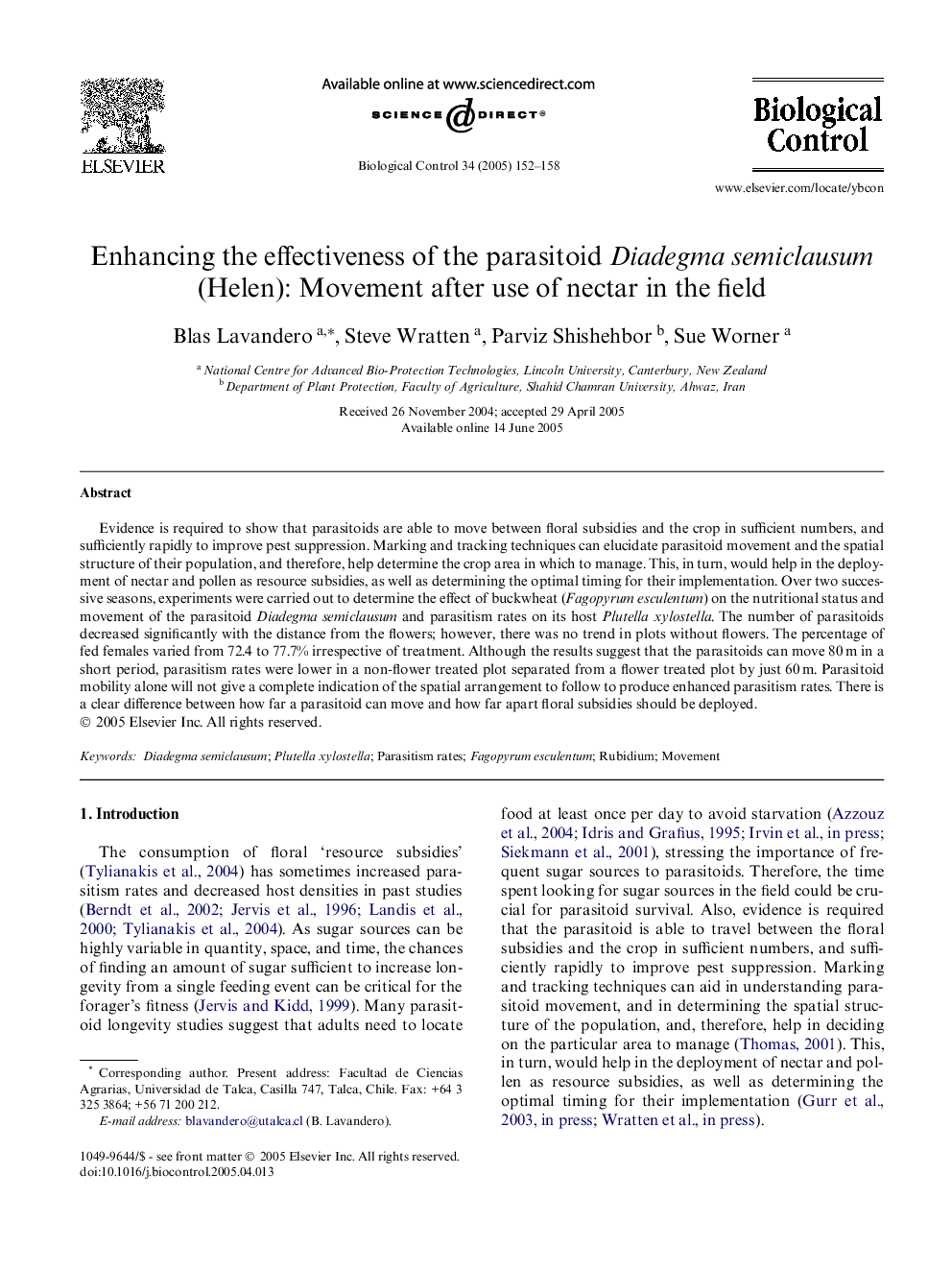| Article ID | Journal | Published Year | Pages | File Type |
|---|---|---|---|---|
| 9472053 | Biological Control | 2005 | 7 Pages |
Abstract
Evidence is required to show that parasitoids are able to move between floral subsidies and the crop in sufficient numbers, and sufficiently rapidly to improve pest suppression. Marking and tracking techniques can elucidate parasitoid movement and the spatial structure of their population, and therefore, help determine the crop area in which to manage. This, in turn, would help in the deployment of nectar and pollen as resource subsidies, as well as determining the optimal timing for their implementation. Over two successive seasons, experiments were carried out to determine the effect of buckwheat (Fagopyrum esculentum) on the nutritional status and movement of the parasitoid Diadegma semiclausum and parasitism rates on its host Plutella xylostella. The number of parasitoids decreased significantly with the distance from the flowers; however, there was no trend in plots without flowers. The percentage of fed females varied from 72.4 to 77.7% irrespective of treatment. Although the results suggest that the parasitoids can move 80Â m in a short period, parasitism rates were lower in a non-flower treated plot separated from a flower treated plot by just 60Â m. Parasitoid mobility alone will not give a complete indication of the spatial arrangement to follow to produce enhanced parasitism rates. There is a clear difference between how far a parasitoid can move and how far apart floral subsidies should be deployed.
Related Topics
Life Sciences
Agricultural and Biological Sciences
Agronomy and Crop Science
Authors
Blas Lavandero, Steve Wratten, Parviz Shishehbor, Sue Worner,
